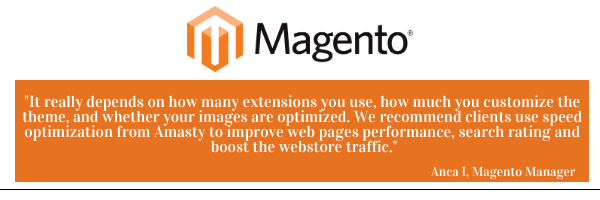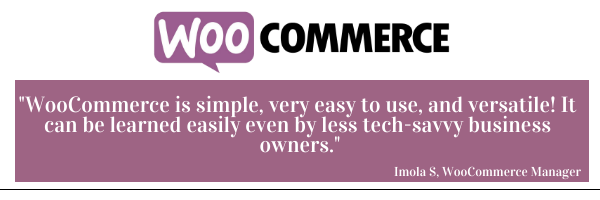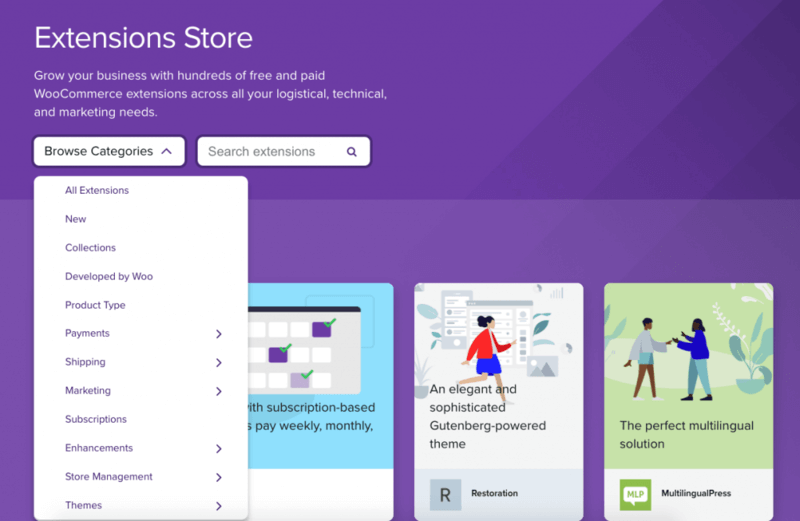Magento vs WooCommerce-two of the biggest hitters in the website platform business. A flexible, end-to-end solution can give you the power to deliver great customer experiences, increase revenue, and grow your company. But how to know which one will work best for you, and your customers? How do they differ and in what aspects are they similar?
With so many aspects to choosing a platform, this article aims to unpack the things you need to know, clear up any misconceptions, and give you the information you need to make an informed decision. Whether this is your first website or your tenth we’ll guide you through the things that’ll help you make the right choice.
In this article we’ll be covering:
- What is Magento?
- What is WooCommerce?
- Magento Open Source vs Magento Commerce
- Pricing
- Marketing
- Performance
- Hosting
- Security
- Business 2 Business
- Pro’s of WooCommerce
- Pro’s of Magento
- Choosing
Before setting out on the path to choosing a platform there’s some key questions you need to consider. You don’t go and buy a Ferrari if you need a 4 x 4 and the same goes when it comes to website development- invest in something that fits your needs.
Questions to Consider
- What is your budget? Both entry-level options are free, but as you start to customize, and consider web hosting options things start to add up.
- Predicted growth- where do you see your company going?
- How big is your product range/ size of your catalog?
- How complex do you want your site to be? Consider the level of functionality you want to achieve.
- Who are your customers, what are their needs and expectations?
- What level of expertise do you or team have in website development?
- How much traffic are you predicting to come through your shiny new website?
- How quickly do you want your website to be up and running?
What is Magento?
Magento is an open-source PHP based eCommerce platform and is currently the second most popular content management systems (CMS) for online retailers.
So this sounds promising, but how is Magento regarded? Amongst industry professionals, Magento has built a strong reputation, one based on its ability to provide comprehensive, tailored eCommerce solutions. Released in 2007, the platform has gone from strength to strength:
- Magento has held the #1 spot on the internet Retailer 1000 list for four years in a row.
- Merchants that use Magento grow three times faster on average.
- Magento accounts for 12% of all eCommerce sites.
Magento Open Source vs Magento Commerce
Magento comes in two distinct versions: Magento Open Source, which is free, and the premium Magento Commerce which has a fee. In short, Magento Commerce fits larger companies with bigger budgets, with companies such as Coca-Cola, and Helly Hansen on the roster. That’s not to say Magento Open Source is light on features. Here’s how they stack up.
Magento Open-Source version includes:
- Multiple product types.
- Admin dashboard customization.
- Guest checkout.
- An unlimited number of products and categories.
- Multiple product types.
- Persistent shopping cart.
- Free shipping options.
- Up-sells, cross-sells, and related products.
- CAPTCHA functionality.
- Unlimited product attributes.
- One-page checkout.
- Email order notifications.
- Sales reports.
- Wish lists for authorized and unauthorized customers.
Magento Commerce is Magento’s premium offering, it’s ideal for businesses ready to upgrade their website and grow sales, marketed as a complete solution for businesses with high aspirations. It comes with a heap of advanced features and tools, and is a real standout for B2B, with; optimized search solution for customers, professional reporting and analysis dashboards, increased B2B functionality, customer success manager, and free hosting!
What is WooCommerce?
WooCommerce is an open-source, free eCommerce plugin for WordPress, written in PHP and MySQL. Woo’s journey started when three friends began developing themes for WordPress. Their first plugin WooCommerce was released in 2011, and from its humble beginning, WooCommerce has grown to be one of the most popular platforms around.
- 3,317,205 live websites are currently using WooCommerce
- 4.9% of websites use WooCommerce
- WooCommerce powers over 28.19% of all online stores
One of the biggest reasons WooCommerce has become so popular is its ease of use. By working on top of WordPress it successfully integrates commerce and content, it’s fully customizable and has heaps of options.
- Unlimited products in your store.
- Unlimited orders and sales.
- Various product filters ( sort by rating, attribute, price, popularity, etc.).
- Automated taxes calculation based on the customer’s shipping or billing address.
- Advanced inventory management.
- Coupons and related products for promotion.
- Comprehensive reports.
- Unrestricted number of images and galleries.
- Can be integrated with Google Analytics.
- Includes multiple currencies, measurement units, and languages.
- Flat or custom shipping rates.
Pricing
Both WooCommerce and Magento ‘Community Edition’ are open-source and free for anyone to use. But you will spend money on;
- Domain name- anywhere from $10-$500 for Magento and WooCommerce.
- Extensions and themes Magento $0-200/ WooCommerce $25-.
- Hosting- starting at $10 depending on what you want (see ‘Hosting’ below).
If you’re looking at investing in Magento’s premium offering ‘Commerce’, you’ll be spending a minimum of $22,000 a year, with the cost based on your company’s gross sales revenue.
Need extra functionality from your site? You’ll need extensions- make sure you research what you need first, and how much it costs. Your once free platform can soon start to become expensive.
All things considered, WooCommerce is the more affordable option, however, both WooCommerce and Magento Community Edition are excellent choices, and you can make them work to your budget.
Marketing
The key to any business is the ability to market your products and services. SEO and content are the primary marketing strategy, and so when you’re choosing a platform you need to consider how a platform can facilitate your marketing goals.
With the WooCommerce plugin based on top of WP, it comes as no shock that it’s an excellent platform for all your writing, blogging, and campaign needs. Furthermore, by making use of shortcodes you can jazz up your landing page by inserting additional elements. If you want to go further, make use of the highly functional ‘Automate Woo’ extension which automates marketing with a slew of tools including; review rewards systems, SMS notifications, follow-up emails to regular customers, and personalized coupons to name a few.
Magento on the other hand is already equipped with a powerful SEO toolkit straight out the box, which is there to help your business climb up the search engine rankings. Magento also comes with a nifty marketing menu for; managing promotions, communications, user-generated content and more. Sadly, unlike WooCommerce Magento does not have blog writing functionality which has to be added as an extension.
Performance
Everyone wants a ‘go faster’ website, and there’s good reason for this- research by Microsoft on attention span shows humans’ ability to focus has dropped below goldfish! If you’ve got a slow website people will leave, and they will take their money with them. Just consider- a 1 second delay decreases customer satisfaction by 16%, and drops conversion rate by 7%.
Research shows a slight difference in performance- Magento pips WooCommerce with an average page load time of 665 milliseconds, and 776 milliseconds respectively. However, it’s not as easy as saying A is better than B. As our Magento project manager explains:

Also consider, using a quality Content Delivery Network (CDN), and choice of hosting provider can affect performance.
Hosting
Now hosting can start at $10 a month, but with everything, if it sounds too good to be true it most likely is. When choosing hosting you need to consider these key things.
`1) Performance can be affected by poor bandwidth and RAM, research how much you need and how much you’ll get.
2) You have a choice, between a shared, and dedicated server. Shared saves on cost, but dedicated gives you more control over systems and security.
3) Magento sites require specially adapted servers. They also require more space than WooCommerce sites, and with this comes an increase in hosting fees.
4) Security- a big concern for all eCommerce retailers. When you opt for a more expensive hosting provider you’re generally ensuring better performance and security. Ask yourself “if my website goes down what will my hosting provider do?” What you need is a company that supports yours, a team ready to complete updates and install patches when needed, isolate and prevent infections, and one that anticipates problems before they even happen. If this doesn’t happen, you could be left with security issues costing far more than the price for decent hosting.
Security
There’s one way to lose revenue, and it’s through security issues-crashing websites, lost emails, customer data in the hands of cybercriminals, if that doesn’t sound appealing you need to give the topic some thought. Similarly to performance, the security of your online operation is very much up to you. Both Magento and WooCommerce give you the option of implementing several security measures.
WooCommece is a reliable platform, updated continuously in order to remove security threats and vulnerabilities. There’s a selection of plugins you make sure everything is watertight, including Wordfence and WP fail2ban.
Whereas the security and performance of third-party products (such as the ones used for Woo) vary, all Magento plugins meet the highest security requirements. Furthermore, since the migration of stores from Magento 1 to 2 there has been a drop in Malware found on-site from 3.0% to 2.5 %, and that trend is likely to continue.
Business 2 Business
The business to business (B2B) market is on the rise, there’s predictions that B2B will overtake B2C and grow to be worth 6.7 trillion. The benefit for your business- huge cost-saving, B2B can substantially decrease sales cost by 90%!
Both Magento and WooCommece, have excellent offerings. WooCommerce has an all in one wholesale suite plugin, easy to use, lightweight, and optimized for your needs. Magento, on the other hand, takes it a little further, rather than B2B or B2C Magento has B2E or Business to Everyone. Understanding that market dynamics are constantly changing and businesses need flexibility Magento comes with an abundance of B2B features such as; Omnichannel selling features, effortless reporting and analytics, and amazing order processing and inventory management.
Pro’s of WooCommerce
Ease of use. It’s set up perfectly for anyone with WordPress experience. Whether you’re a fully-fledged WordPress guru or not, much of the appeal of choosing Woo is it’s ease of use, with the platform scoring 4.5/ 5 for usability by its users.

WooCommerce is lightweight and makes use of a modular system. From there on, you have the option to craft your site any way you wish. WooCommerce is also made to work alongside WordPress plugins, and so you can keep any features you had in previous sites.
Flexibility. Make a good looking website, with the functionality you need. Woo gives access to more than 55,000 free word press plugins and themes. Theme options allow you to change the color of the design, add different functions, and insert videos or picture galleries.

Speed. WooCommerce has an approachable installation process, and easy to control interface. Time is money, and the longer it takes to build a website the more money you’ll be spending. Depending on the level of customization and features your website requires, WooCommerce sites can be ready to go in 6 weeks.
WooCommerce: Things to consider
Price, yes it’s free, but let me explain. If you require serious levels of functionality you’ll need extensions, yes many are free, however many cost. Make sure you know what you want from your website before starting.
Performance. Some extensions affect performance, and as you start adding more and more extensions there’s potential for your website to start dragging. This also has the potential to affect search rankings, which nobody wants.
Low on features. If you’re looking to start up an e-shop quickly WooCommerce provides everything you need; item ratings, cart functions, payment options, product design variation. But when you start to consider increasing the functionality, you’ll often require extensions.
Pro’s of Magento
Scalability. Magento is built for scalability. If you’re predicting large amounts of growth Magento should have no problem in handling it, the platform supports some of the largest eCommerce businesses in the world, and is able to carry 500K Sku’s-if needed!
User-friendly dashboard. Magento has made a big effort to make eCommerce management easier and more efficient. Everyone wants seamless navigation, and Magento does not disappoint in this area with an intelligent, intuitive touchable system, allowing admin to move smoothly between pages and attributes. It also makes management across different devices easy.
Customization. Magento really is one of the top platforms for customization; create product catalogs, item descriptions, similar products, images, and features. Further features include the ability to oversee multiple shops, adjust languages, currencies, and pricing methods all from the admin panel.
Intelligent Reporting System. With a suite of dynamic reports Magento’s reporting system allows you to monitor everything from shop visits to product movement. Yes, WooCommerce has analytics options, but not to the level of Magento. Gain access to 5 dashboards with over 100 reports, allowing you detailed insights to questions such as ‘are my orders growing month to month’ or “who are my most loyal customers”- important stuff.
Great User Interface. Another standout feature of Magento is its user experience (UX), applying innovation at the forefront of user interface and user experience design. Seamless web design can boost conversion by 400%, and with a plethora of features, Magento gives you the ability to create great UX.
Magento: Things to Consider
Feature heavy. On one side, it’s in-depth set of features and high level of functionality make it a winner when providing high-quality e-commerce solutions, however, without the right set of tech skills, its feature-rich system could start to become a nightmare. Ecomitize has a team of Magento experts if you need help.
Hosting. Firstly you’ll need a dedicated server that has been adapted to meet the needs of Magento, and hosting fees are higher than WooCommerce. If you’re thinking of building a bijou website, maybe Magento’s not for you- unless you’ve got high aspirations and huge predicted growth.
The high price! But then again, if you have the money then Magento comes with all the features you need to create a first-class eCommerce platform.
Comparison Made Easy
| Magento | Woo | |
| Overview | Magento is an open-source independent eCommerce CMS | WooCommece is a WordPress plugin supported by a community of users |
| Costs | The community version is free, Enterprise premium version starting at $22,000 | WordPress plugin which is free. You pay for extensions. |
| Hosting | Domain name and hosting not included in Community Version. Enterprise includes hosting | Hosting and domain name required |
| Functionality | A complete all in one solution, with a huge array of customization options, from small to mid-size shops, and beyond with Magento Enterprise. | A CMS solution providing a decent amount of features for creating eCommerce shops. Add features through extensions. |
| Catalog | Supports up to 500K items if you need | Unlimited, however, it might struggle with big numbers. |
| Integrations | Free and paid extensions are available through the Magento Market place. Low on out of the box themes. | Thousands of extensions and themes available via WooCommerce Market place, and from 3rd party providers. |
| Security | High-level security with regular updates. 2.0 has seen great results. | Innovative plugins to increase security. Community support. |
| Ease | Not overly complicated, however, a large number of features mean it can become cumbersome. | Easy peasy, WooCommerces modular system makes things easy. |
| Business types | Community edition-small to medium.Enterprise edition- medium to large | The platform works great for small to medium size businesses. |
WooCommerce or Magento? Which platform to choose?
Maybe it’s wrong to put Magento vs Woo, the two platforms sit near the top in terms of the most popular platforms today- and they co-exist there as they provide solutions for different business needs. Each has its merits, and you choose each one for different reasons:
- Choose WooCommerce- for ease of use, price, and speed. An easy to set up, modular system which makes customization, cheap and versatile. Great for smaller businesses!
- Choose Magento Open Source- for functionality, security, and scalability. Heaps of features, high-level security, and the ability to grow with you. Perfect for small to medium level businesses.
- Choose Magento Commerce- for a complete e-commerce platform. From inventory size, to cutting edge functionality, and dedicated hosting. A package for businesses looking to make an impact.
Whatever your needs, Ecomitize have a team of specialists with extensive experience in getting the most out of both Magento and WooCommerce. Get in contact with our team to find out how we can help your business.



